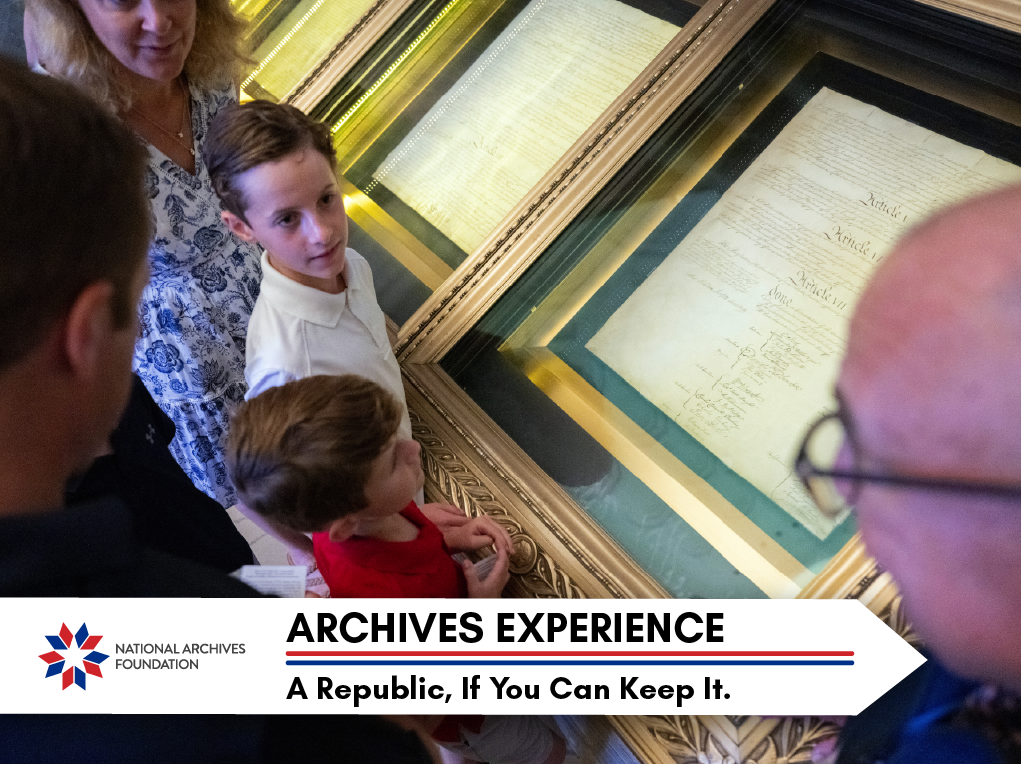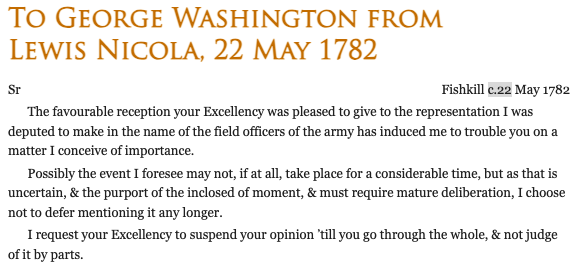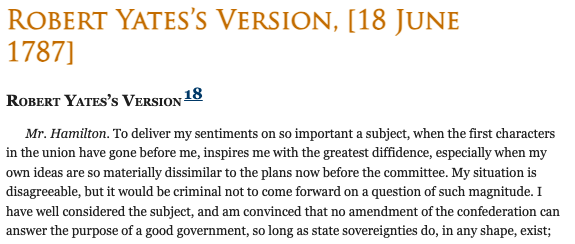Archives Experience Newsletter - September 1, 2023
Removing the Crown
Welcome to the Archives Experience debut series: A Republic, If You Can Keep It. In celebration of Constitution Day, we’re chronicling the creation of this document—but these aren’t the stories we’ve all heard before. Instead, we’ll look at how the National Archives holdings show just how close we came to an entirely different form of government and how “We the People” triumphed in the end.
Our first attempt at self-governing was a failure. Eager to shed the absolute rule of monarchy, the Founding Fathers at first created a loose association of states, technically under one government, but not at all united.
As a result, some thought the pendulum had swung too far. By the time the Founders gathered to address the shortcomings of the Articles of Confederation, some of them were back to advocating for a monarch to and set us on the right course.
This is the story of how the United States avoided instituting monarchy…
The Magna Carta, the charter of liberties granted by King John of England in 1215, is the foundation of individual rights in Anglo-American law. Agreed upon in June of that year at Runnymede, the document affirmed that the king was subject to the charter and that if he did not conform to its clauses, his barons were authorized to declare war on him. The Magna Carta represented the English barons’ first step toward demolishing the principle of vis et voluntas, or “force and will,” by which the English monarch had reigned up until that point. Thus it was established that the king was subject to the laws of men, rather than ruling by absolute power.
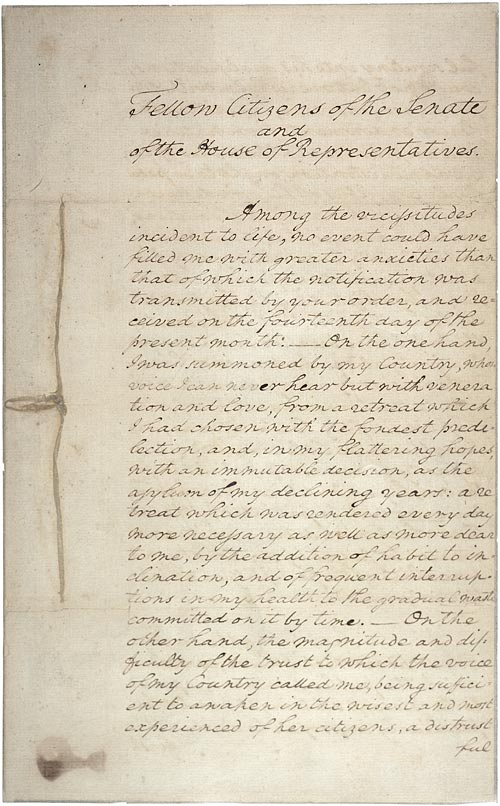
George Washington’s inaugural address
NARA’s Milestone Documents
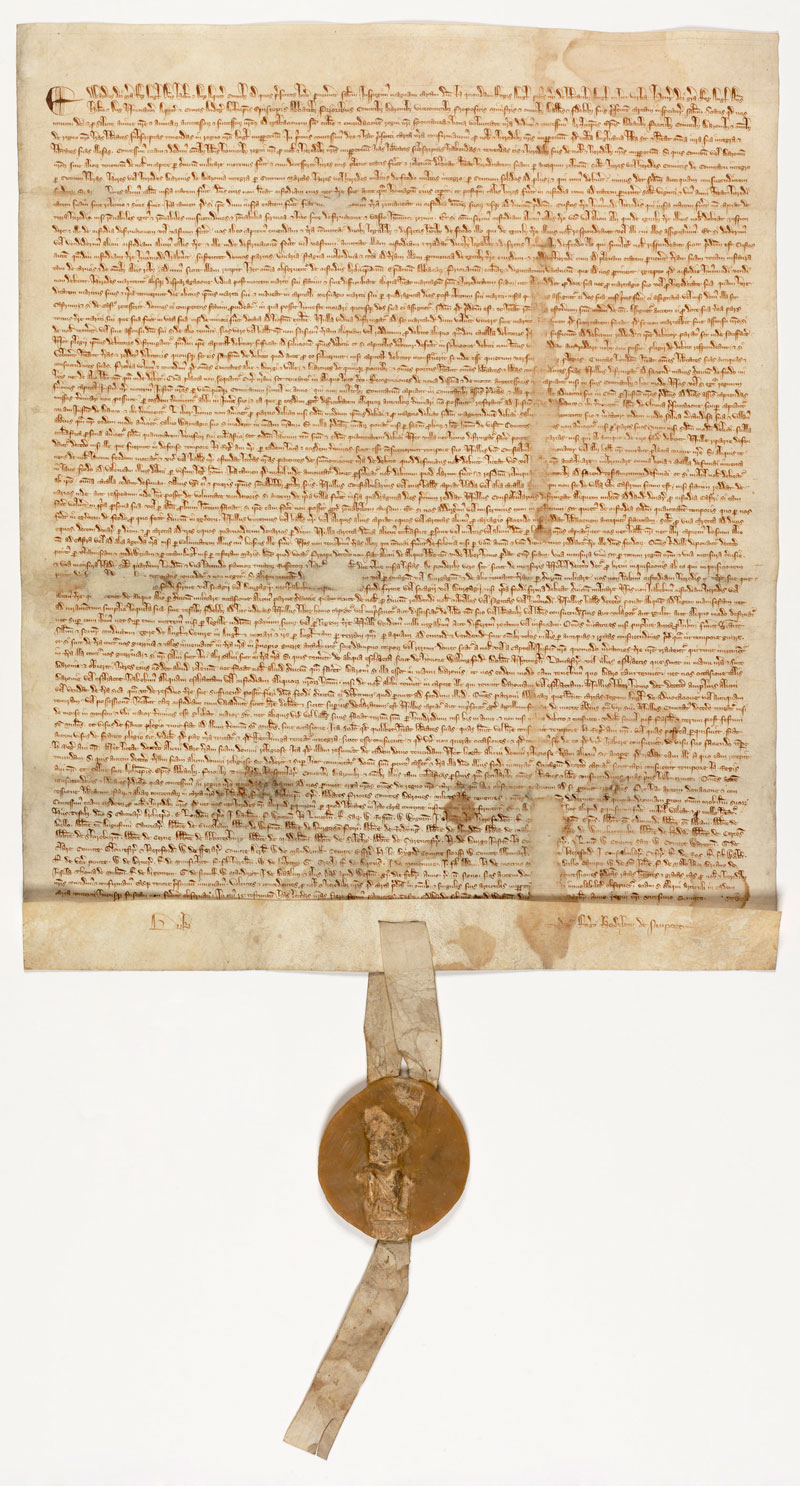
Magna Carta
NARA’s Milestone Documents
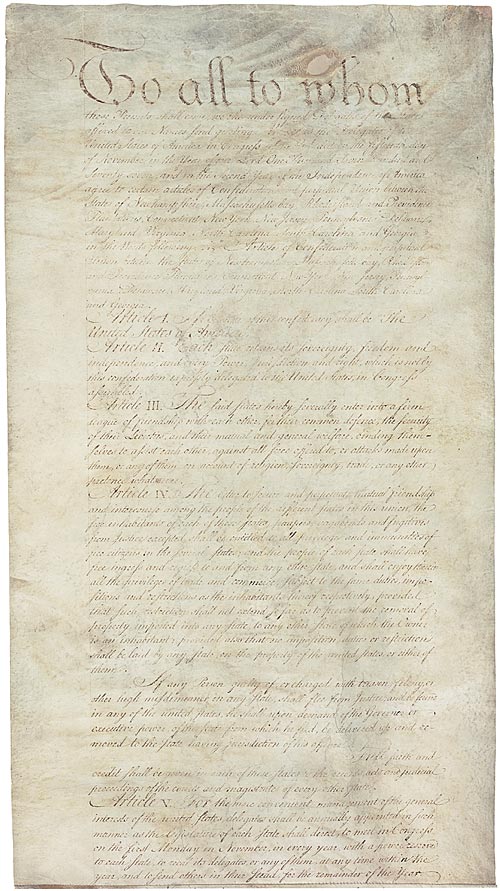
Articles of Confederation
NARA’s Milestone Documents
When the American colonists revolted against the tyranny of the British crown, they chose George Washington to lead the Continental Army. Aged 43 when he accepted his command, Washington had already played many different roles—soldier, scholar, gentleman, land surveyor, planter, slave owner, legislator, and Virginian, which means, above all, he was an aristocrat. He led the army in the fight against the British from 1775 until the Revolutionary War ended in 1783.
On May 22, 1782, after the British had surrendered at Yorktown but before the Treaty of Paris had been finalized, one of Washington’s officers, Lewis Nicola, wrote him a letter proposing that he become king of the new nation. Nicola reasoned that the nations that had attempted a republican form of government—Venice, Genoa, and Holland—had not been successful, while monarchies such as Britain had worked out rather better. We do not have a record of the general’s reply, but we do know of his actions, which speak louder than words. George Washington most emphatically did not want to become King George I of America.
On December 4, 1783, Fraunces Tavern on Broad Street in New York City hosted an elaborate dinner for General George Washington, at which he bade his fellow officers farewell. He then traveled by horseback to Annapolis, Maryland, where the Continental Congress was meeting. On December 23, he addressed the congress and formally resigned his military commission, handing over the original document, which was dated June 15, 1775, to the assembled delegates. Many who witnessed this event wept.
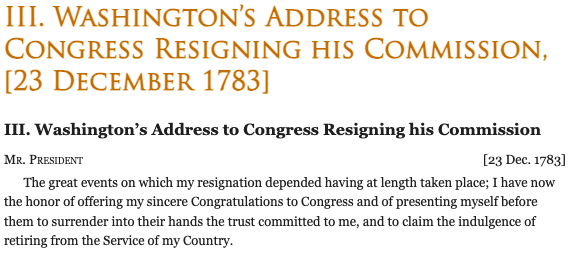
Washington’s Address to Congress Resigning His Commission–December 23, 1873
NARA’s Founders Online
Many historians consider this event a crucial point in American history, the turning point that determined that the fledgling United States would become a republic, not a monarchy. At that time, the nation was governed by the Articles of Confederation, and Washington had made it clear that he intended to return to his beloved Mount Vernon as a private citizen.
Less than four years later, in May 1787, the leaders of the young nation met again to revise the Articles of Confederation because they had not provided for a sufficiently strong central government to keep the country from descending into chaos. Instead, the delegates ended up drafting an entirely new document, the Constitution of the United States. Among its provisions are the election of a chief executive, the President, a bicameral Congress, and an independent judiciary.
The discussions of the Constitutional Convention were secret, but we have records that indicate that Alexander Hamilton, for one, made long and detailed arguments in favor of a republican government rather than a monarchy. Both Alexander Hamilton and James Madison advocated for the President to be chief executive for life, but the delegates ultimately decided against that.
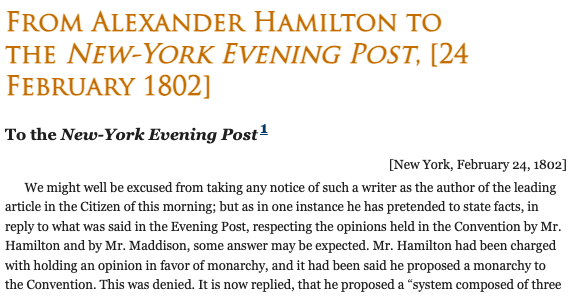
Hamilton writes to the New-York Evening Post discussing monarchy versus republic
NARA’s Founders Online
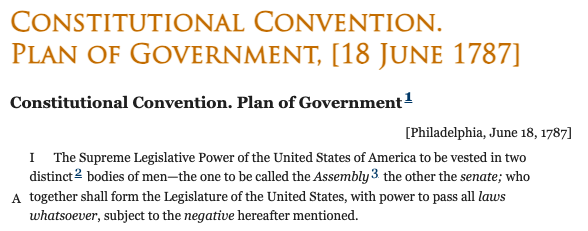
Hamilton’s plan presented to the convention
NARA’s Founders Online
Article I Section 9 of the Constitution also formally forbids the establishment of royalty in the United States: “No title of nobility shall be granted by the United States: and no person holding any office of profit or trust under them, shall, without the consent of the Congress, accept of any present, emolument, office, or title, of any kind whatever, from any king, prince, or foreign state.”
At Mount Vernon in Virginia, George Washington was not surprised when he received word that he had been chosen to be the first President of the United States. He was rather reluctant to serve, but he felt it was his duty, so on April 30, 1789, he took the oath of office on the balcony of New York City’s City Hall. He set another precedent by leaving the presidency after serving two terms—although, truth be told, he was barely persuaded to stick it out for a second term. He released his farewell address to the public on September 19, 1796, even though John Adams was not inaugurated as the second President until March 4 of the next year.
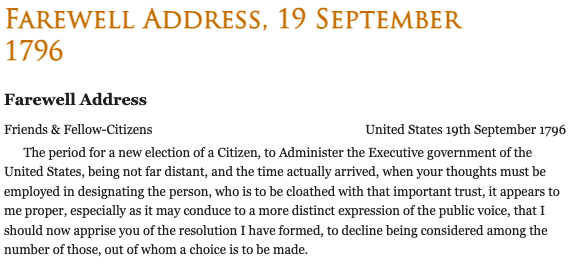
George Washington’s farewell address
NARA’s Founders Online
The original wording of the Constitution does not set term limits for the President—it only states that a term is four years long. Other Presidents followed Washington’s precedent until Franklin Delano Roosevelt was elected for a record four terms, from 1932 until 1944. He died in office on April 12, 1945 of a cerebral hemorrhage.
The twenty-second amendment to the Constitution permanently set George Washington’s two-term precedent in stone. It was ratified on February 27, 1951.

Berryman cartoon, “Untitled”–against the third term of President Teddy Roosevelt
National Archives Identifier: 306175
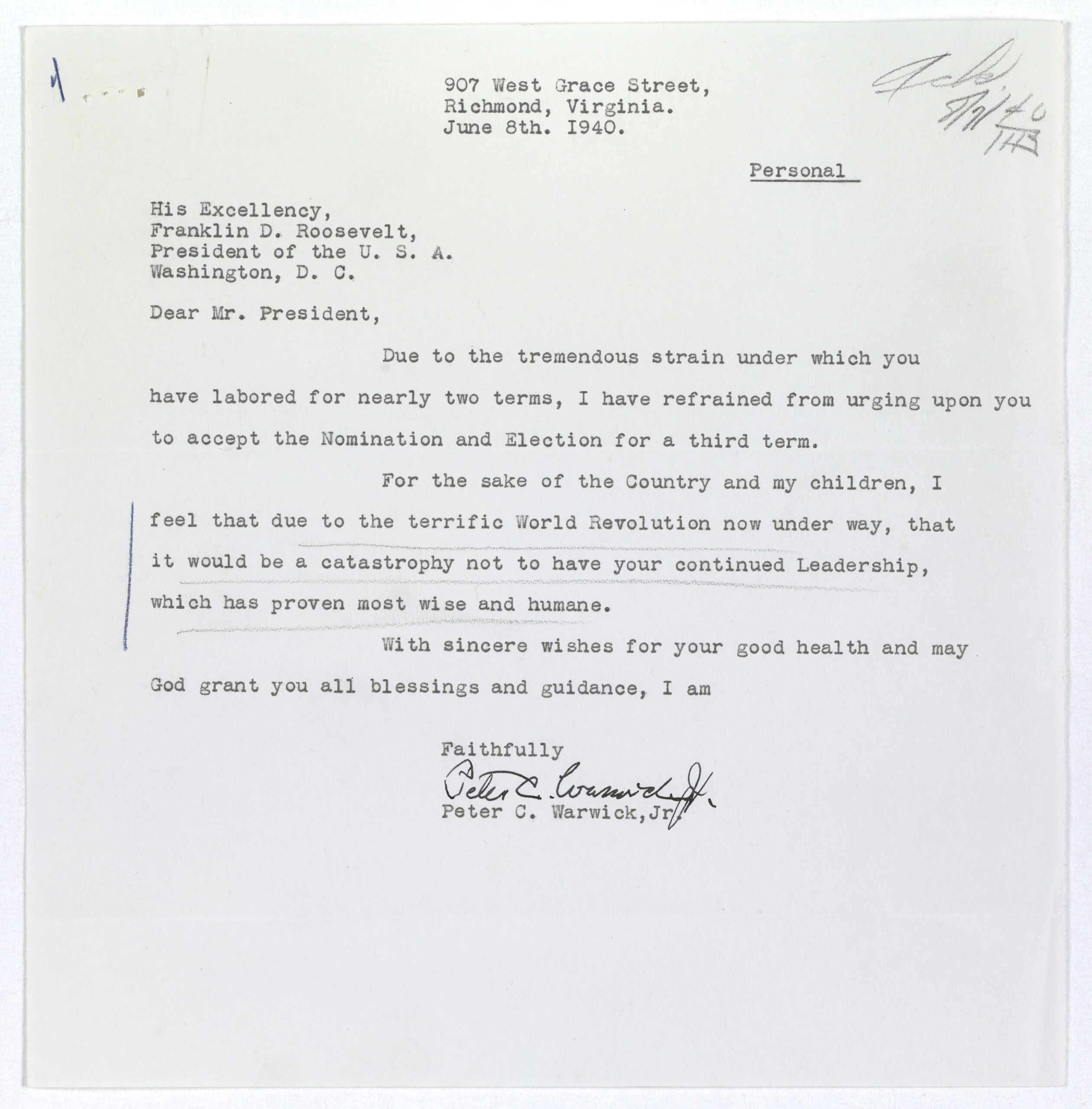
Letter to FDR in support of a third term
National Archives Identifier: 26080948
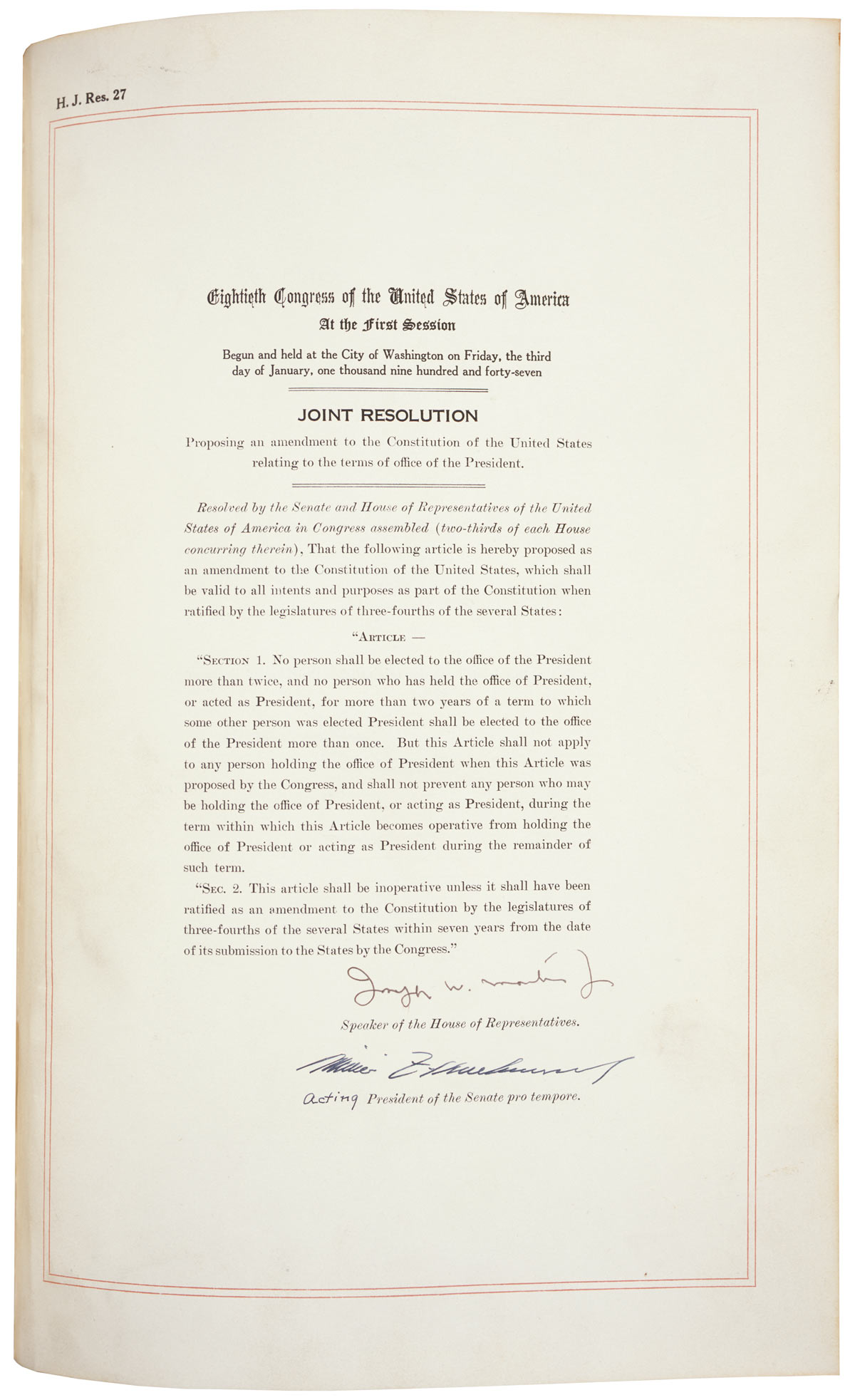
22nd amendment limiting the terms of the President, ratified 1951
NARA’s Running for Office Online Exhibit




